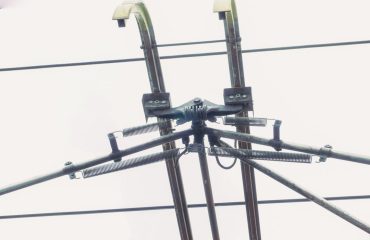The steel industry, a cornerstone of global infrastructure, is undergoing a dramatic transformation driven by the rise of digital technologies. Digital steel platforms are no longer a futuristic concept; they’re becoming essential tools for optimizing operations, enhancing sustainability, and gaining a competitive edge. This post delves into the key trends shaping the future of these platforms.
1. The Rise of Artificial Intelligence (AI) and Machine Learning (ML) in Steel Production
AI and ML are revolutionizing steel production by enabling predictive maintenance, optimizing production processes, and improving product quality. Predictive maintenance algorithms analyze sensor data from equipment to anticipate potential failures, minimizing downtime and reducing maintenance costs. ML models can optimize the entire steelmaking process, from raw material selection to final product delivery, by analyzing vast datasets and identifying patterns invisible to human analysts. This leads to improved yield, reduced energy consumption, and enhanced overall efficiency. Furthermore, AI-powered quality control systems can detect defects early in the production process, reducing waste and improving product consistency.
2. Blockchain Technology: Enhancing Transparency and Traceability in the Steel Supply Chain
The steel supply chain is complex, involving numerous intermediaries and geographically dispersed operations. Blockchain technology offers a solution by providing a secure, transparent, and traceable record of every stage of the steel lifecycle. From raw material sourcing to finished product delivery, each transaction is recorded on the blockchain, ensuring authenticity and preventing fraud. This enhanced transparency builds trust among stakeholders, improves supply chain efficiency, and enables better inventory management. Furthermore, blockchain can facilitate the tracking of sustainable practices throughout the supply chain, enabling verification of responsible sourcing and reducing the environmental impact of steel production.
3. Digital Twins and Simulation: Optimizing Steel Plant Design and Operations
Digital twins are virtual representations of physical assets, allowing engineers and operators to simulate different scenarios and optimize plant design and operations. In the steel industry, digital twins of furnaces, rolling mills, and other critical equipment can be used to test different operating parameters, predict equipment performance, and identify potential bottlenecks. This allows for proactive adjustments to improve efficiency, reduce waste, and enhance overall productivity. Simulation tools, coupled with digital twins, enable the testing of new technologies and processes in a virtual environment before implementation in the real world, minimizing risk and maximizing return on investment.
4. The Integration of IoT (Internet of Things) Devices for Real-time Monitoring and Control
The proliferation of IoT devices in steel plants enables real-time monitoring of critical parameters such as temperature, pressure, and flow rates. This data can be used to optimize production processes, detect anomalies, and prevent equipment failures. IoT sensors integrated into machinery and infrastructure provide a continuous stream of data that can be analyzed using advanced analytics techniques to identify patterns and trends, leading to improved decision-making and enhanced operational efficiency. Real-time monitoring also facilitates predictive maintenance, allowing for timely interventions and minimizing disruptions.
5. Sustainability and the Circular Economy: Digital Platforms Driving Green Steel Production
The steel industry is under increasing pressure to reduce its environmental impact. Digital platforms are playing a crucial role in driving sustainable steel production by optimizing energy consumption, reducing waste, and promoting the circular economy. AI-powered tools can optimize energy usage in steelmaking processes, reducing carbon emissions. Digital platforms can also facilitate the tracking and management of scrap metal, enabling its efficient reuse and reducing reliance on virgin materials. Furthermore, digital tools can help monitor and verify the sustainability credentials of steel products throughout the supply chain, enhancing transparency and building consumer trust.
The adoption of digital steel platforms is transforming the industry, driving efficiency, sustainability, and innovation. As technology continues to evolve, we can expect even more sophisticated and integrated platforms to emerge, further shaping the future of steel production and the broader manufacturing landscape.
SEO-Friendly Tags:
- Digital Steel Platforms
- Steel Industry 4.0
- AI in Steel Manufacturing
- Sustainable Steel Production
- Steel Supply Chain Optimization




